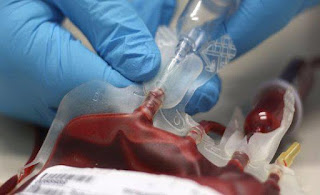Ensuring Comfort and Safety: The Importance of Patient Positioning Devices
Patient positioning is an essential aspect of patient care in medical settings, such as hospitals, clinics, and rehabilitation centers. The correct positioning of a patient can help prevent injury, improve patient comfort, and facilitate medical procedures. Patient positioning devices are an important tool for healthcare professionals to ensure the proper alignment and stabilization of patients during medical procedures. In this blog post, we will explore the different types of patient positioning devices and their uses.
Positioning Pillows
Positioning pillows are one of the most commonly used patient positioning devices in medical settings. They are designed to provide support and comfort to different parts of the body, such as the head, neck, back, and limbs. Positioning pillows are made of various materials, including foam, gel, and air-filled chambers. They come in different shapes and sizes to accommodate different body types and medical procedures.
Positioning pillows are useful for a wide range of medical procedures, such as surgery, imaging, and rehabilitation. They help maintain proper alignment and reduce the risk of pressure ulcers and other complications. They are also easy to clean and can be reused multiple times.
Positioning Wedges
Positioning wedges are similar to positioning pillows, but they are designed to provide support to specific parts of the body, such as the back, hips, and legs. They are typically made of foam and come in various shapes and sizes to accommodate different medical procedures and patient needs.
Positioning wedges are commonly used in obstetrics and gynecology to support women during childbirth. They are also useful for patients undergoing orthopedic procedures, such as hip replacement surgery, to maintain proper alignment and prevent injury.
Positioning Slings
Positioning slings are used to lift and support patients with limited mobility. They are made of durable materials, such as nylon or polyester, and are designed to distribute weight evenly across the patient's body. Positioning slings are typically attached to a lifting device, such as a hoist or crane, to facilitate safe and efficient patient transfers.
Positioning slings are commonly used in nursing homes, rehabilitation centers, and hospitals to assist patients with activities of daily living, such as bathing, dressing, and toileting. They are also useful for patients with mobility impairments, such as those with spinal cord injuries or neurological disorders.
Positioning Chairs
Positioning chairs are specialized chairs designed to provide support and comfort to patients with limited mobility or medical conditions that make sitting difficult. They are typically made of durable materials, such as steel or aluminum, and are designed to distribute weight evenly across the patient's body.
Positioning chairs are commonly used in rehabilitation centers and nursing homes to assist patients with mobility impairments, such as those with Parkinson's disease or cerebral palsy. They are also useful for patients with pressure ulcers or other medical conditions that require them to spend extended periods in a seated position.
Read More Information, Click Here: https://www.coherentmarketinsights.com/market-insight/patient-positioning-devices-market-1353
In conclusion, patient positioning devices are an essential tool for healthcare professionals to ensure the proper alignment and stabilization of patients during medical procedures. They come in various shapes and sizes to accommodate different patient needs and medical procedures. Proper patient positioning can improve patient outcomes, prevent injury, and facilitate medical procedures.




Comments
Post a Comment